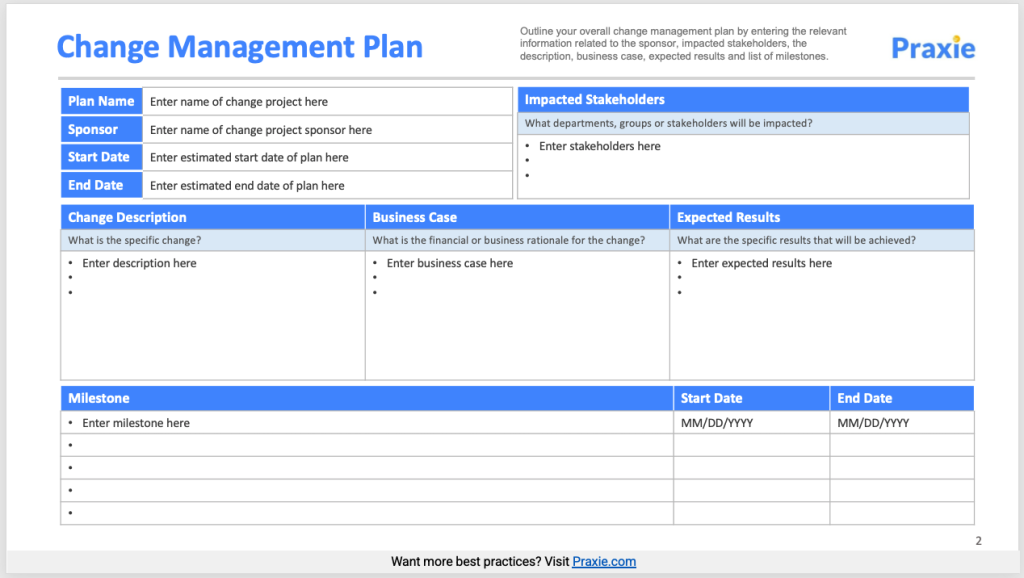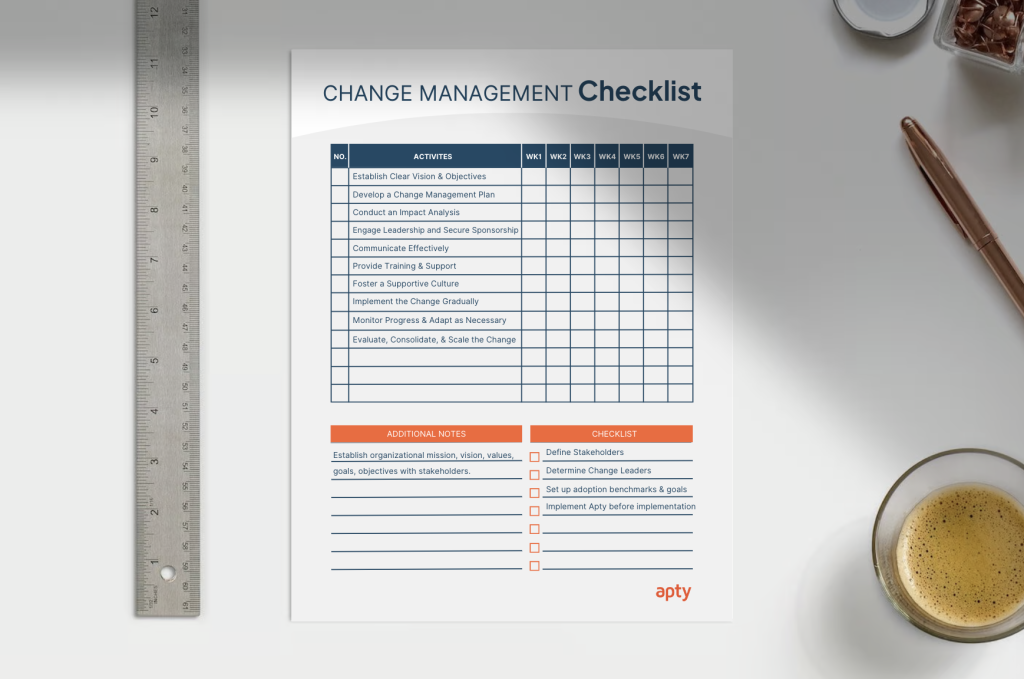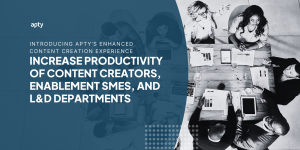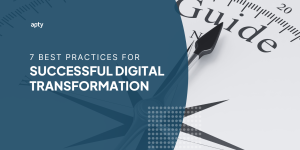Today, several companies are in constant flux as they respond to the diverse and fast-paced, advancing workplace, local and global economies, and, inevitably, technological advancement. This means that processes, systems, and strategies always evolve for an organization to remain competitive. This article provides a comprehensive guide on creating and executing an effective change management plan, emphasizing the importance of clear objectives, stakeholder engagement, structured communication, and the utilization of digital adoption platforms to streamline the transition process and ensure successful organizational change.
Most changes occur to improve a process, a product, or an outcome; it is critical to identify the focus and clarify the goals.
Clearly defining the reasons for a change helps identify the resources and individuals who will facilitate the process and lead the transformation.
To succeed, you must create a change management plan that ensures a smooth transition and engages your entire team and stakeholders from the beginning.
What is a Change Management Plan?
A change management plan is a strategic blueprint that outlines the steps, tools, and processes an organization intends to use to manage changes within its systems, processes, or structure.
- Minimizes disruption
- Engages stakeholders throughout the transition
- Ensures that the change is implemented smoothly and effectively, aligning with the organization’s overall objectives
- Specifies what and how certain changes can be implemented across all facets of the organization
A vital part of the change management plan is determining who will be affected by the change, directly or indirectly. You also need to know what will be altered by implementing this plan, including the policies, processes, job roles, and organizational structure.
Some training and instruction may be required to assist your employees in gradually adjusting to the change. Tailored discussions to address the shift can help your team embrace the change.
Why Change Management is Essential
Change management is critical because it provides a structured approach to transitioning individuals, teams, and organizations from a current state to a desired future state. It’s not just about implementing new technologies or processes; it’s about preparing your workforce to adapt to these changes, embracing new ways of working, and achieving strategic objectives.

The Role of Data in Change Management
The reliance on data and analytics in change management has grown exponentially. According to McKinsey, companies that use data-driven approaches in their change management strategies are more likely to report successful transformations. Data can help identify areas for improvement, measure the impact of changes, and provide insights into employee engagement and adoption rates.
Change management action items
For change leaders navigating software transitions, crafting an action plan that is both strategic and actionable is key to ensuring a smooth transition. Here’s how to structure a more effective change management action plan, with specific examples tailored to software changes involving platforms like Workday, ServiceNow, Salesforce, HubSpot, Oracle, SAP, Infor, Coupa, and others:
Change Management Plan Basics
- Highlights objectives and how to achieve them. A workable action plan contains the roles, responsibilities, skills, and resources needed for successful implementation.
- Time frame and speed of change. The action plan should state an end date for the whole project, including the stages involved, time frames for small departmental changes, and how fast teams should accomplish tasks.
- Deals with obstacles and challenges. An effective change management action plan should contain a learning and development program to attract employee engagement, address performance and skills gaps, and track employee progress.
- Evaluation criteria. Evaluation criteria determine if your policies and strategies are effective, enable management to take advantage of opportunities, avoid setbacks, and analyze how well your employees adapt to the training program.
Define Clear Objectives and Roles
- Specific Objectives: Outline precise goals for the software transition, such as increasing sales efficiency with Salesforce or improving HR processes with Workday. Define what success looks like for each objective.
- Roles and Responsibilities: Assign clear roles and responsibilities. For instance, designate a Salesforce Champion to lead the CRM transition or appoint a Workday Integration Specialist for HR software updates.
Establish Timeframes and Milestones
- Project Timeline: Set a realistic timeline for the overall project, including key milestones. For a ServiceNow implementation, you might set a 90-day timeline for the initial rollout, with specific weekly goals for each team.
- Speed of Adoption: Determine the pace of adoption for different departments. For example, prioritize the rapid adoption of Oracle financial modules in the finance department while allowing more time for supply chain teams to transition to Infor.
Address Obstacles and Enhance Engagement
- Identify Potential Challenges: Anticipate common obstacles specific to each software. For example, user resistance to new interfaces in SAP or data migration challenges in Oracle.
- Engagement Strategies: Develop targeted engagement strategies, such as interactive workshops for HubSpot marketing automation tools or gamified learning experiences for Coupa procurement processes.
Set Evaluation Criteria and Metrics
- Performance Indicators: Establish specific metrics to gauge the transition’s success. This could involve tracking the decrease in sales cycle time with Salesforce or measuring the improvement in procurement efficiency with Coupa.
- Continuous Monitoring: Implement a system for ongoing evaluation, such as regular feedback sessions or performance analytics within the software itself. For ServiceNow, set up dashboards to monitor service desk response times pre- and post-implementation.
Software Change Management Examples
- Workday Rollout: Conduct role-based training sessions to familiarize employees with the new HR system, ensuring that each department understands how Workday affects their specific workflows.
- Salesforce CRM Implementation: Launch a pilot program with the sales team to refine processes before a company-wide rollout. Use Salesforce’s built-in analytics to track adoption rates and sales performance improvements.
- Oracle Financial Systems Transition: Schedule regular check-ins with the finance department to address any technical issues or training gaps. Utilize Oracle’s reporting features to monitor real-time data accuracy and financial reporting efficiency.
By tailoring your change management action plan to the specific needs and challenges of each software platform, you can facilitate a smoother transition, ensure higher engagement and adoption rates, and achieve your strategic objectives more effectively.
What should be in a change management plan?
A change management plan must include end goals, self-evaluations, a team to oversee the change, a guide that explains how the change will happen, and ongoing assessment. In other words, the plan must show everyone what the organization wants and how it will change its business processes to achieve it.
Three critical elements of a change management plan
- Establishing organizational mission, vision, values, goals, objectives
- Alignment of people’s roles and how employees contribute to the organizational goals
- Identifying potential challenges and how to address them when they arise
Who should be included in a Change Management Plan, and why

DOWNLOAD THE EBOOK
Accelerate Change Management with a Digital Adoption Center of Excellence
Including a diverse group of stakeholders in a change management plan is essential for ensuring its success. The key groups to involve and their reasons include:
- Senior Management and Executives: Their support is crucial for securing the resources needed and for legitimating the change process. They play a pivotal role in communicating the vision and importance of the change to the entire organization.
- Change Management Team or Project Managers: These individuals are responsible for the day-to-day management of the change process. They plan, execute, and monitor the change, ensuring alignment with the overall objectives.
- Department Heads and Team Leaders: They have a deep understanding of how the change will impact their specific areas. Their involvement is critical for identifying potential challenges and opportunities within departments and for facilitating communication between the change management team and their respective teams.
- Human Resources: HR plays a key role in addressing the human side of change management, including training, morale, and any changes to job roles or structures. They are essential for ensuring that the workforce is prepared, supported, and engaged throughout the transition.
- IT Department: For changes involving new technologies or systems, the IT department is crucial for ensuring that the technical aspects of the change are feasible, secure, and properly integrated with existing systems.
- Finance Department: They provide oversight on the budgetary aspects of the change, ensuring that the plan is financially viable and that costs are tracked and managed effectively.
- Communications Specialists: Effective communication is at the heart of successful change management. Communications specialists craft messages that articulate the why, what, and how of the change, ensuring consistent and clear information dissemination across all levels of the organization.
- Front-line Employees: Including employees who will be directly affected by the change is vital for gaining insights into potential practical challenges and for building buy-in and engagement. Their feedback can provide valuable perspectives on the operational implications of the change.
- External Consultants or Experts: For specialized changes, external consultants can offer invaluable expertise and an outside perspective. They can assist in areas where internal knowledge may be lacking, ensuring that best practices are followed.
By involving a broad spectrum of stakeholders, the change management plan benefits from a wide range of insights and expertise, enhancing its effectiveness and increasing the likelihood of successful adoption across the organization.
Example of a change management plan
A change management action plan serves as a roadmap, defining the concrete steps an organization can take to perform the change management process. When changes affect business operations, a change management plan is required to avoid disrupting workflow and support the team through the change.




Step-by-step change management process example
Step 1: Senior management will meet to discuss the hopes of the company. They’ll look at the company’s current model and see the scope for improvement.
Step 2: Once they’ve decided on what needs to change, they’ll assemble a team to make it happen. The team must consist of employees from various departments to ensure everything is moving forward.
Step 3: Before implementing anything, you need to communicate the change management to your employees. There must be a step-by-step guide to explain what changes will be made and how they will benefit the employees.
Step 4: Provide them with the appropriate tools that can make the change happen and keep your employees engaged all the way through. Leverage the tools that can address employee needs and boost their performance.
Step 5: Once the company has undergone its change, the change management team should regularly check in with employees to see how successful the plan was. Also, gather employees’ feedback for future improvements.
Change management communication best practices
Effective change management communication involves clear, consistent, and transparent messaging across multiple channels to ensure all stakeholders are informed and engaged. Best practices include tailoring communication to different audience needs, facilitating two-way feedback to address concerns and gather insights, and reinforcing the vision and benefits of the change to maintain motivation and support throughout the transition process.

Best practices to ensure a smooth transformation process
- Frequent and Transparent Communication: Keep all stakeholders informed with regular updates, using clear and concise language. A digital adoption platform can facilitate this by integrating announcements and feedback mechanisms directly within the software environment, ensuring messages are timely and relevant.
– Overcome change resistance by enabling open reviewing measures, publicly recognizing change progress, and offering rewards to boost employee morale. Be honest and transparent with all the facts and figures about the changes.
– Communicate consistently using different mediums. Hold interactive workshops and provide opportunities for networking and sharing ideas about the change.
– Demonstrate the reasons for the change, determine the scope, and clarify the anticipated benefits and milestones. The costs should also be transparently outlined. - Comprehensive Training and Support: Offer targeted training sessions that cater to different learning styles and roles. Digital adoption platforms like Apty can provide personalized, in-app guidance and support, allowing users to learn at their own pace within the context of their daily tasks.
- Active Engagement and Feedback Loops: Encourage feedback from all levels of the organization to identify concerns and suggestions early. Digital adoption platforms can collect user feedback and usage data in real-time, enabling quick adjustments to training materials and communication strategies.
- Continuous Monitoring and Adaptation: Track adoption rates, user engagement, and progress towards goals using analytics. A digital adoption platform offers detailed insights into how new software or processes are being utilized, helps identify areas where additional support or training may be needed, and measures the overall success of the transformation initiative.
The best ways to communicate change
- Hold a company-wide meeting. Gather everyone in a room or on a video conference call to inform them of the change. Be upfront on everything, from what needs to be changed to how this will affect employees.
- Everyone needs the same information and shouldn’t feel blindsided by the announcement. Stress an open-door policy. People will have questions, and they can ask them at any time.
- Send a company-wide email to let your employees know who/how they can contact someone with concerns. Employees who feel they’re being taken seriously will be more inclined to adopt the change.
- Choose authoritative sources to support the change. Leaders and management are great at getting the message out there, but workers need someone or something to help reinforce it as they’re inundated with information daily. Companies must choose employees who can generate enthusiasm for the change. It needs to be someone relatable with expertise in the subject.
- Constantly check in with employees. Send everyone an email survey asking their thoughts or hold regular team meetings for an open discussion.
These change management action items and best practices can provide direction for your change initiatives. A Digital Adoption Platform can assist your change management initiatives by helping your employees adopt change quickly without much resistance.
The Complete Checklist for Enterprise Change Management
Enterprises continuously need to adapt and transform to stay ahead. Effective change management is crucial for ensuring these transitions are smooth, successful, and sustainable. This guide provides a complete checklist of change management action items tailored for enterprise-level changes. From planning to execution, this checklist will serve as your roadmap for navigating change within your organization.

1. Establish Clear Vision and Objectives
- Define the purpose and goals of the change.
- Ensure alignment with overall business strategy.
2. Develop a Comprehensive Change Management Plan
- Outline the scope, approach, and timeline of the change.
- Identify key stakeholders and define roles and responsibilities.
3. Conduct an Impact Analysis
- Assess how the change will affect different parts of the organization.
- Identify potential risks and devise mitigation strategies.
4. Engage Leadership and Secure Sponsorship
- Ensure leaders commit to and visibly support the change.
- Leadership should communicate the change’s importance and benefits to the entire organization.
5. Communicate Effectively
- Develop a communication plan that includes messaging, channels, and frequency.
- Tailor communications to different audience segments within the organization.
6. Provide Training and Support
- Determine training needs based on the impact analysis.
- Utilize Digital Adoption Platforms like Apty for targeted, effective training.
7. Foster a Supportive Culture
- Encourage open dialogue and feedback.
- Recognize and reward positive behaviors and achievements related to the change.
8. Implement the Change Gradually
- Break down the change into manageable parts.
- Use pilots or phased rollouts to test and refine the approach.
9. Monitor Progress and Adapt as Necessary
- Establish metrics and KPIs to measure success.
- Use data to make informed adjustments to the plan.
10. Evaluate, Consolidate, and Scale the Change
- Conduct post-implementation reviews to capture learnings.
- Embed changes into the organization’s culture and processes.
The Importance of a Digital Adoption Platform
Integrating new technologies can be challenging, and emerging solutions like Digital Adoption Platforms (DAPs)–like Apty–can significantly ease this process. DAPs are designed to facilitate seamlessly adopting software applications within an organization. They offer in-app guidance, support, and training, addressing employees’ common challenges when adapting to new tools.
Key Components of a Successful Change Management Plan
- Clear Objectives and Goals: Define what success looks like. Goals should be SMART: Specific, Measurable, Achievable, Relevant, and Time-bound.
- Comprehensive Communication Strategy: Effective communication is paramount. It should be ongoing, transparent, and utilize multiple channels to ensure messages are received and understood.
- Training and Support: Tailored training programs are essential for helping employees understand and adapt to new processes or technologies. A DAP like Apty can offer personalized, on-demand training that aligns with individual learning paces and preferences.
- Employee Engagement and Feedback: Engaging with employees throughout the change process and soliciting their feedback can increase buy-in and identify potential areas of resistance early on.
- Continuous Monitoring and Adaptation: Change management is not a set-and-forget process. Regularly review progress against your objectives, using data to inform adjustments and improvements.
Leveraging Apty for Enhanced Change Management
Apty stands out by facilitating faster software adoption and enhancing overall employee performance and engagement. By providing real-time, contextual guidance, Apty helps users navigate through new applications effortlessly, significantly reducing the learning curve and increasing productivity from day one.
Moreover, Apty’s analytics capabilities allow leaders to track adoption rates, user engagement levels, and areas where users might be struggling. This data is invaluable for refining training programs, addressing gaps in the change management plan, and ensuring that the organization is moving toward its strategic goals efficiently.
A Digital Adoption Platform like Apty can be a game-changer in your enterprise change management strategy. Apty facilitates smoother transitions by offering:
- On-Demand, Contextual Guidance: Simplify the user experience with real-time support.
- Powerful Analytics: Gain insights into usage patterns, bottlenecks, and training effectiveness.
- Increased Adoption and Productivity: Accelerate the learning curve and improve engagement with interactive guidance.
Enterprise Change Management is More Complex Than it Needs to Be
Change management in an enterprise setting is complex but critical for sustainable growth and innovation. By following this comprehensive checklist and leveraging advanced tools like Apty, organizations can structure, effect, and align their change management initiatives with their strategic goals. Remember, the key to successful change management lies in meticulous planning, open communication, and continuous improvement.
When companies decide to introduce new technologies as part of their change initiatives, to ensure the fullest usage of the tech stack, they should utilize a tool like Apty. Apty is an award-winning digital adoption platform that improves employee performance, productivity, and engagement and ensures faster software adoption.
A robust tool like Apty can streamline your change initiatives end-to-end.
- Apty helps employees be productive from day one and ensures faster software ROI.
- Apty helps CIOs and Change Leaders tackle and overcome change management challenges effectively.
- Apty assists in successful change management by improving employee training, communication, and support.
Using a Digital Adoption Platform Simplifies Change Management
Digital Adoption Platforms (DAPs) like Apty are designed to facilitate and enhance the adoption of software applications across organizations. Their capabilities align with the action items and topics outlined in the checklist for enterprise change management. Here’s how Apty can support each key area:

1. Establish Clear Vision and Objectives
- Guided Workflows: Apty can create guided workflows that align with the change objectives, demonstrating how new processes or software directly support the organization’s vision.
2. Develop a Comprehensive Change Management Plan
- Customized Onboarding: Tailor onboarding experiences for different roles within the organization, ensuring that the change management plan addresses specific needs and concerns.
3. Conduct an Impact Analysis
- Analytics and Insights: Utilize Apty’s analytics to understand the usage of current systems and processes, identify potential impacts of changes, and pinpoint areas that require additional support.
4. Engage Leadership and Secure Sponsorship
- Dashboards for Leadership: Provide executives with dashboards that showcase adoption rates, progress towards objectives, and the impact of their sponsorship on success metrics.
5. Communicate Effectively
- Targeted Notifications: Deliver personalized, in-app messages and announcements related to the change, ensuring timely and relevant communication.
6. Provide Training and Support
- On-Demand Training: Offer on-demand, in-app training and support materials to help users adapt to new software or processes without leaving their workflow.
- Interactive Guidance: Create interactive guides that lead users through new or changed processes step-by-step, reducing confusion and resistance.
7. Foster a Supportive Culture
- Feedback Loops: Implement feedback tools within Apty to gather user insights and concerns, promoting a culture of continuous improvement and engagement.
8. Implement the Change Gradually
- Phased Rollouts: Use Apty to introduce changes gradually, starting with pilot groups, and then scaling based on feedback and performance metrics.
9. Monitor Progress and Adapt as Necessary
- Real-Time Analytics: Leverage real-time data to see how users adopt new tools and processes and make agile adjustments to training, support, and communication strategies accordingly.
- Success Metrics: Define and track key performance indicators (KPIs) within Apty to evaluate the effectiveness of the change management efforts.
10. Evaluate and Scale the Change
- Post-Implementation Review: Utilize Apty’s analytics for comprehensive reviews of the change initiative, assessing areas of success and opportunities for improvement.
- Long-Term Adoption: Ensure sustained adoption and proficiency in new systems or processes with ongoing guidance and support features.
By integrating a Digital Adoption Platform like Apty into the change management process, organizations can significantly enhance the effectiveness of their change initiatives. Apty supports the seamless transition of employees to new technologies or processes, ensuring that change management plans are implemented and successful, measurable, and lead to the desired outcomes in productivity and efficiency.















